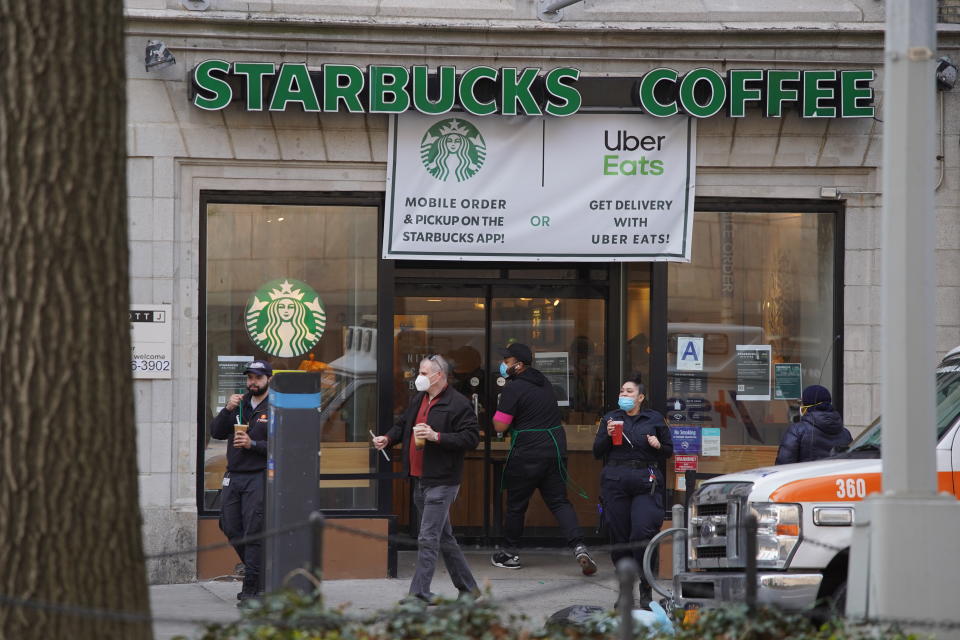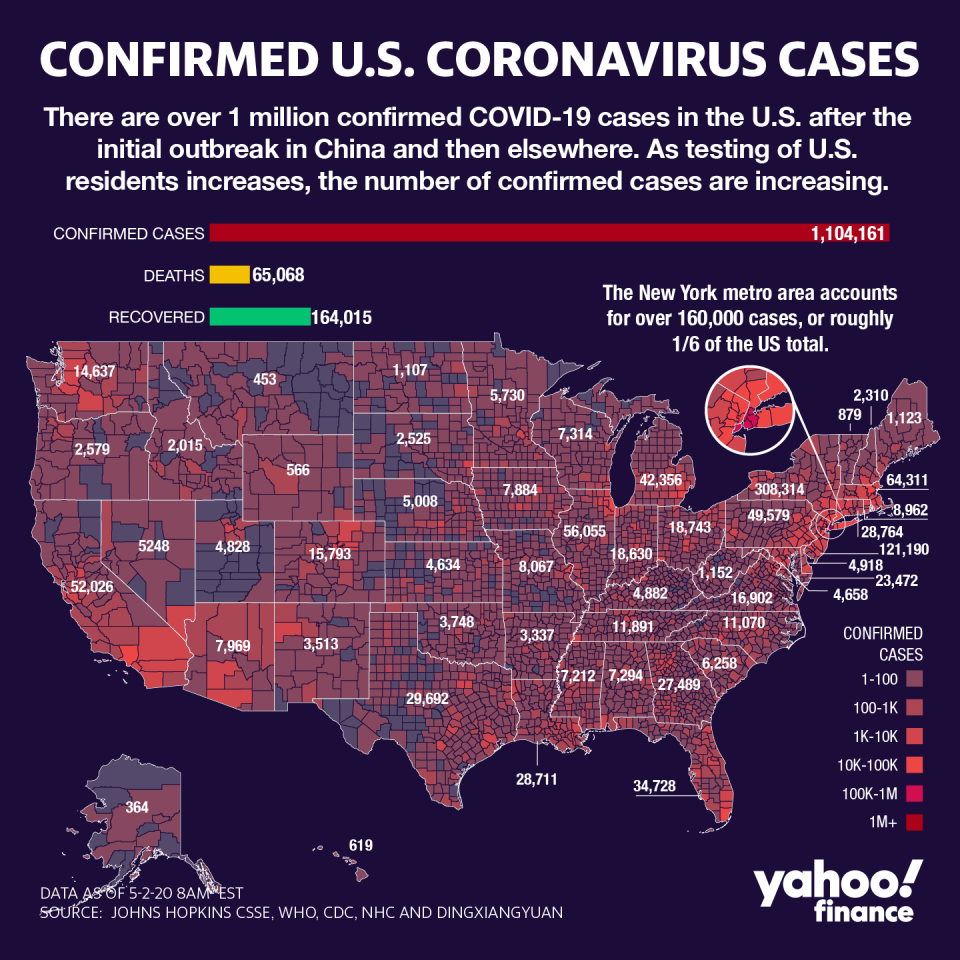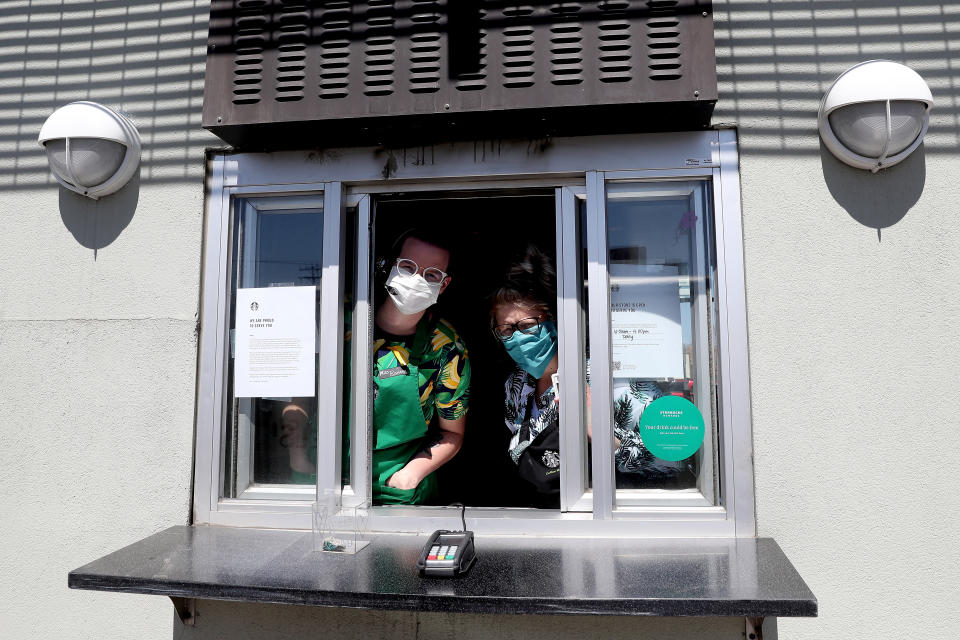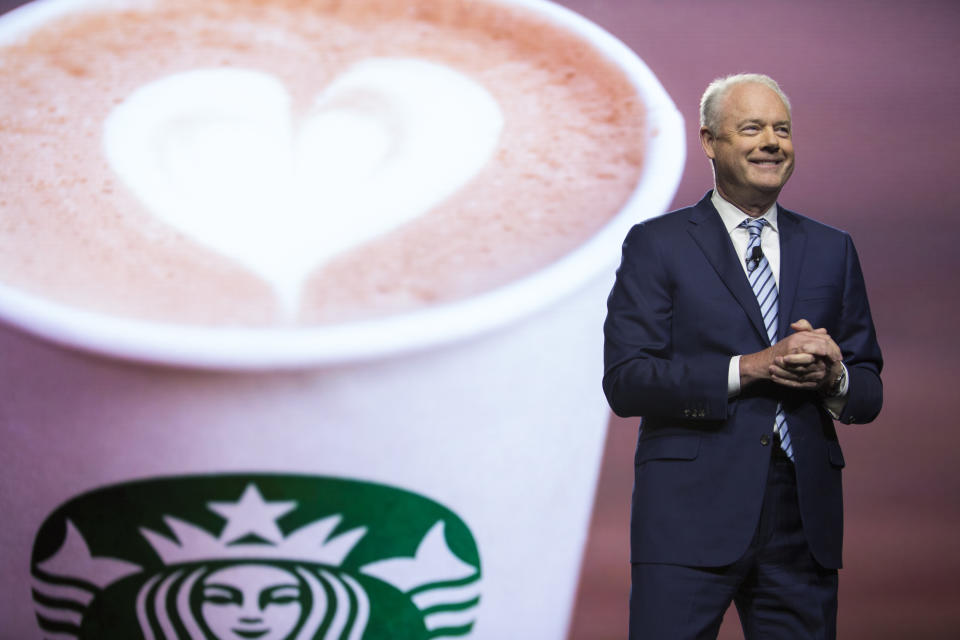Starbucks CEO 'fairly optimistic' about customers coming back after coronavirus lockdowns
Starbucks (SBUX), which was among the first wave of big companies to implement strict social distancing measures in its establishments, plans to start reopening its U.S. stores next week.
During the COVID-19 pandemic, Starbucks closed more than half of its U.S. company-operated stores, causing earnings and comparable sales to plunge during the fiscal second quarter. As it prepares to transition into a post-lockdown future, the coffee giant is banking heavily on its investments in technology and people as a powerful combination to bring customers back to its stores.
In a wide-ranging interview with Yahoo Finance, Starbucks CEO Kevin Johnson explained the company’s plans to have 90% of its stores open by June, how technology will play a critical role in keeping customers safe — and why it's important to take care of employees financially during a time of crisis.
"At the end of the day, what we want to provide is we want to provide safe, familiar, and convenient experiences for our customers," Johnson said recently.
Presently, Starbucks is transitioning from a period Johnson has characterized as "mitigate and contain" to what he now calls "monitor and adapt" as states move to end restrictive stay-at-home orders, and citizens transition into a new normal.
Starbucks, according to Johnson, needs to “monitor and understand what's happening with the virus. You know, until there's a vaccine and treatments, we have to be aware of that.”
And just as certain states have adopted their own specific criteria to relax the lockdowns, “we have to monitor by city, by community, and then adapt the store formats and the store protocols in an appropriate way," he added.

In communities where there are higher COVID-19 casualties, Starbucks won’t "turn the dial up," Johnson explained. Instead, the chain will maintain drive-thrus, mobile order with contactless pickup, and curbside service where there are parking lot facilities, he added.
"But in other communities where we see the number of COVID cases continue to decline, we might now open our cafe for limited seating. We might have a to-go model. And so we're going to be in this phase where we're tuning the store protocols and what we offer customers as we monitor the situation community by community," Johnson added.

‘Fairly optimistic’ recovery
On March 15, Starbucks suspended café seating and moved to a "to go" format in the U.S. Shortly thereafter, the chain pivoted to drive-thru and delivery only to adhere to social distancing rules. Approximately 60% of the 15,000 Starbucks stores in the U.S. offer drive-thru service. Starbucks also offers delivery in partnership with Uber Eats (UBER) across 49 markets in the U.S.
Starbucks had some foresight into the virus's impact on its business back in January, when it temporarily closed more than half of its 4,200 stores in China, its second-largest and fastest-growing market. Today, 98% of the China store fleet is open, but many with modified operations.
"[What] we've seen in China that is as we've reopened stores and as we've created safe, familiar, and convenient experiences for customers, they come back. And each week we see that growing. And so it clearly is the pathway to recovery," Johnson said.
In the U.S., Johnson is "fairly optimistic" on the pace of customers returning based on the drive-thru sales in April.
From now until June, “we're going to get a good idea of how quickly our customer occasions are going to return. And we're fairly optimistic about it just on what we saw in drive-thrus in the month of April," Johnson said — pointing out that the drive-thrus "oftentimes had cars wrapped around the block."
It’s an indication that people really crave their Starbucks, and after weeks of lockdown are eager to “get out and do something," he added.

The app as an asset
With more than 32,000 stores worldwide, Starbucks has always established itself as a destination — or a "third place" between work and home, as the company likes to call it.
While cafe seating won't be widely available at this time, Starbucks' investments in its "digital flywheel" including its Starbucks Rewards mobile app may prove beneficial during this time. During the most recent quarter, Starbucks had 19.4 million active U.S. members on the app, up 15% from a year ago.
In fact, the app is something Johnson called “the safest way to order” in a world where the virus is easily contracted. The CEO, who took the reins in April 2017, hails from a technology background via top roles at Juniper Networks (JNPR) and Microsoft (MSFT).
"And so in a time where customers are looking for safe, familiar, convenient experiences, we think that's a natural way for them to order," Johnson said, adding that Starbucks will "amplify the importance" of the app as a safe ordering experience.

Trust-building
And then there's the human side of Starbucks. Throughout the pandemic, Johnson has also taken the view that "not every decision is a financial one" and has encouraged other business leaders to do all they can to keep jobs, pay employees, and honor benefits.
In March, Starbucks rolled out temporary COVID-19 related benefits for its U.S. employees, including higher hourly wages for those willing and able to work, and catastrophe pay for those who can't work through the end of May.
"[At] a time like this where people are concerned about their health, the last thing I wanted them to be concerned about was their economic certainty," Johnson said. Investing in Starbucks’ employees — especially during painful periods — builds trust, and they "rise to the occasion."
He added: “And so, you know, this is building trust with our partners and with our customers. Our customers know that we're going to take care of our partners. We're going to create a safe environment for our partners and our customers."
Julia La Roche is a Correspondent at Yahoo Finance. Follow her on Twitter.
